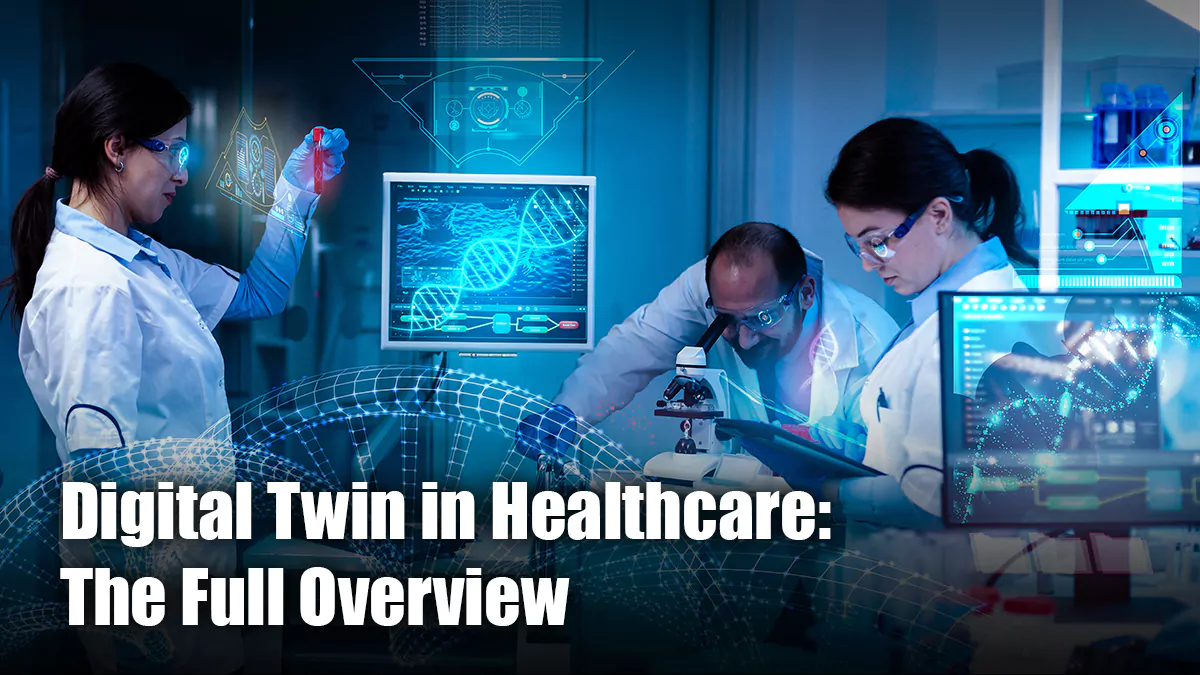Introduction: There are now several gadgets that monitor and collect data on our physiological status, including wearable smartwatches and fitness trackers, medical imaging devices, digital health apps, thermometers, and more. These gadgets not only collect massive volumes of personal health data, but they also generate detailed information about their own operating environment and condition. However, the question remains: how can we properly analyze all of this data and draw meaningful conclusions from it?
The Role of Digital Twins
One promising solution lies in the creation of digital twins. A digital twin is a virtual representation of a physical object or system across its lifecycle. It integrates both up-to-date and historical data about the state of its real-world counterpart. By incorporating these dynamic data into the virtual representation, digital twins offer significant potential for various medical applications. This integration enables proactive decision-making, process optimization, and comprehensive lifecycle management in healthcare.
Benefits of Digital Twins in Healthcare
Proactive Decision Making: Digital twins provide a real-time, holistic view of a patient’s health status, enabling healthcare providers to make informed, proactive decisions. For instance, if a wearable device detects irregular heart rhythms, the digital twin can simulate potential outcomes and suggest immediate interventions.
Process Optimization: By analyzing the data collected from various devices, digital twins can help optimize healthcare processes. This includes everything from streamlining hospital operations to improving patient flow and resource allocation. For example, digital twins can predict peak times in emergency rooms and suggest staffing adjustments to ensure efficient patient care.
Complete Lifecycle Management: Digital twins can track a patient’s health journey from diagnosis to treatment and beyond. This comprehensive tracking ensures continuity of care and helps in tailoring personalized treatment plans. It also facilitates remote monitoring and follow-up care, reducing the need for frequent hospital visits.
Applications of Digital Twins in Medical Devices
Medical devices themselves can benefit from the implementation of digital twins. By continuously monitoring the operational environment and condition of these devices, digital twins can predict maintenance needs and prevent equipment failures. This predictive maintenance ensures that medical devices are always in optimal condition, enhancing patient safety and reducing downtime.
Challenges and Considerations
While the benefits of digital twins in healthcare are immense, there are several challenges to consider:
Data Integration: Integrating data from various sources and ensuring its accuracy and consistency can be complex. Effective data management strategies are essential to overcome this challenge.
Privacy and Security: Handling sensitive health data requires robust security measures to protect patient privacy. Compliance with regulations such as HIPAA is crucial in the implementation of digital twins.
Interoperability: Ensuring that digital twins can communicate seamlessly with different healthcare systems and devices is essential for their effective functioning. Standardization efforts are needed to achieve this interoperability.
The Future of Digital Twins in Healthcare
The future of digital twins in healthcare looks promising. As technology advances, the capabilities of digital twins will continue to expand, offering even more precise and comprehensive insights. With the integration of artificial intelligence and machine learning, digital twins will become more intelligent, enabling predictive analytics and personalized healthcare solutions.
In conclusion, digital twins represent a transformative approach in healthcare, offering unprecedented opportunities for improving patient outcomes and optimizing medical processes. By harnessing the power of data collected from various health monitoring devices, digital twins can revolutionize the way we understand and manage health, paving the way for a more proactive and personalized healthcare system.
FAQs on Digital Twins in Healthcare
What is a digital twin in healthcare?
A digital twin in healthcare is a virtual representation of a physical object or system, such as a patient or medical device, that integrates real-time and historical data to enable proactive decision-making and process optimization.
How do digital twins benefit healthcare providers?
Digital twins provide healthcare providers with a comprehensive, real-time view of a patient’s health, enabling proactive interventions, personalized treatment plans, and improved patient care.
What kind of data do digital twins use?
Digital twins use a combination of up-to-date and historical data from various sources, including wearable devices, medical imaging, health apps, and other monitoring devices.
What are the challenges in implementing digital twins in healthcare?
Challenges include data integration, ensuring data privacy and security, and achieving interoperability between different healthcare systems and devices.
How do digital twins improve the maintenance of medical devices?
Digital twins continuously monitor the operational condition of medical devices, predicting maintenance needs and preventing equipment failures, thus ensuring optimal device performance and patient safety.


